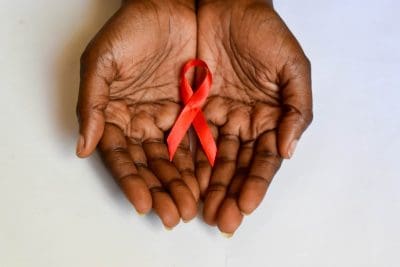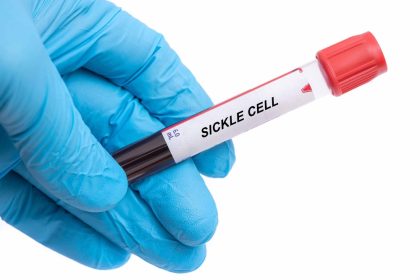Retinal diseases are at the forefront of a quiet revolution in the realm of ophthalmology. Gene therapy, once a distant dream, is now emerging as a beacon of hope for millions affected by these conditions. This cutting-edge approach promises to restore sight where traditional treatments have faltered, potentially transforming the lives of those dealing with both inherited and acquired retinal conditions.
The promise of genetic intervention
At its core, gene therapy involves introducing genetic material into a patient’s cells to combat disease. For those with retinal disorders, this could mean replacing faulty genes or introducing new ones to restore proper function to the eye’s delicate structures.
The medical community is no longer just treating symptoms. They’re addressing the root cause of these diseases at a molecular level. The retina, a light-sensitive layer at the back of the eye, has become a prime target for this innovative treatment. Its accessibility and relative isolation from the body’s immune system make it an ideal candidate for genetic interventions.
A new frontier in eye care
The landscape of retinal disease treatment is vast and varied. From rare inherited conditions to more common age-related issues, the potential applications of gene therapy are extensive.
Promising results are emerging from clinical trials for conditions once thought untreatable. It’s not just about halting disease progression anymore. In some cases, researchers are seeing improvements in visual function.
One such success story is Luxturna, a gene therapy approved by the FDA in 2017. Designed to treat a rare form of inherited blindness caused by mutations in the RPE65 gene, Luxturna has demonstrated sustained improvements in patients’ vision, offering a glimpse into the transformative potential of these treatments.
Navigating challenges
Despite the enthusiasm, the path to widespread gene therapy adoption is not without obstacles. The medical community is dealing with complex biological systems, and the long-term effects of altering genetic material are still not fully understood.
One significant hurdle is the delivery of genetic material to the target cells. Researchers are exploring various vectors, with modified viruses like adeno-associated viruses (AAVs) showing promise. These tiny biological couriers can carry therapeutic genes into cells with minimal risk of unwanted genetic integration.
However, AAVs have limitations. They can only carry so much genetic material, forcing researchers to get creative with delivery methods for some conditions. Alternative approaches, including non-viral vectors like nanoparticles, are under investigation. These methods offer larger carrying capacities and potentially lower production costs but face challenges in achieving long-lasting gene expression.
The race against time
For many patients, the clock is ticking. Retinal diseases often progress over time, destroying the cells that gene therapies aim to save. There’s an urgency in the field, as earlier intervention offers better chances of preserving vision.
This reality underscores the importance of early detection and timely intervention for retinal diseases, as identifying these conditions early can greatly improve treatment and vision preservation. Early intervention allows gene therapies to target retinal cells while they are still healthy, maximizing benefits. However, a key limitation is that gene therapies require viable cells to be effective; once cells deteriorate beyond a certain point, the therapy may not work as there are no healthy cells to repair. This places greater emphasis on prompt diagnosis and highlights the need for research into therapies that can regenerate damaged cells or treat advanced retinal diseases.
Beyond inherited disorders
While much of the focus has been on rare genetic conditions, researchers also set their sights on more common acquired retinal diseases. Age-related macular degeneration (AMD) and glaucoma, which affect millions worldwide, are now in the crosshairs of gene therapy research.
Developments in AMD treatment are particularly exciting. Researchers are looking at therapies that could suppress the overproduction of vascular endothelial growth factor, a key player in the wet form of AMD. If successful, this could reduce the need for frequent eye injections, dramatically improving patients’ quality of life.
The cost of innovation
The high cost of gene therapies raises accessibility concerns, particularly for those with retinal diseases. While groundbreaking in treating previously incurable conditions, these therapies are expensive. Luxturna, approved for certain inherited retinal diseases, costs $425K per eye, totaling $850K for complete treatment. This raises questions about affordability, even with insurance, and highlights broader issues of healthcare equity and financial burden. As more gene therapies for retinal diseases emerge, debates over cost, coverage, and access will likely grow, emphasizing the need to balance innovation with treatment accessibility.
The field is still in its early stages. As manufacturing processes improve and more therapies come to market, there’s hope that costs will decrease. But right now, affordability remains a major issue.
Policymakers and healthcare providers are grappling with how to make these potentially life-changing treatments available to all who need them. Some propose innovative payment models, such as outcomes-based pricing, where costs are tied to the treatment’s effectiveness.
Looking to the future
Despite the challenges, the future of gene therapy in ophthalmology looks bright. With approximately 200 clinical trials currently underway for various retinal diseases, the next decade could see a surge in approved treatments.
The outlook is optimistic but measured. Gene therapy isn’t a cure-all, at least not yet. But for many patients, it offers a chance at preserving or even improving vision where no other options exist.
As research continues and technologies advance, the dream of restoring sight to millions affected by retinal diseases inches closer to reality. For those living in the shadows of vision loss, gene therapy offers not just treatment but hope – a chance to see the world anew.
In the ever-evolving landscape of medical science, gene therapy for retinal diseases stands as a testament to human ingenuity and perseverance. As we peer into the future, the view, for many, is becoming clearer by the day.











